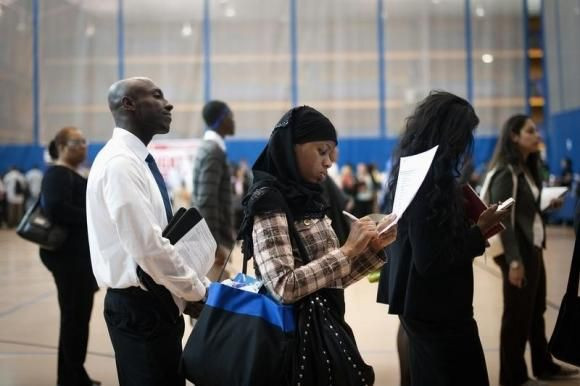US Consumer Sentiment Declines As Fewer Workers Expect Incomes To Rise In Coming Months

The vast majority of U.S. workers’ wages either stagnated or declined last year, and a key monthly survey on consumer confidence shows Americans are more skeptical about their chances of getting a raise this year. The Conference Board said Tuesday that the number of consumers expecting their incomes to grow dropped from nearly 20 percent in the January poll to 15.1 percent in February.
The New York-based research group’s closely watched Consumer Confidence Index showed an overall decline in consumer opinion about the country’s economic conditions. The index declined to 96.4 in February, down from January’s 103.8. Consumer sentiment remains at levels seen before the Great Recession, but the latest survey shows a spike in cynicism about the job market.
“While the number of consumers expecting conditions to deteriorate was virtually unchanged, fewer consumers expect conditions to improve, prompting a less upbeat outlook,” Lynn Franco, director of economic indicators at The Conference Board, said in a statement.
Among the survey results, respondents who think there will be more job opportunities in the coming months declined from 17.3 percent to 13.4 percent. At the same time, the number of people who think there will be fewer jobs also declined at a smaller rate, from 14.8 percent to14.3 percent. Meanwhile, 12 percent of the respondents said they think their incomes will decrease, up from 10.8 percent, suggesting that some consumers expect to switch jobs to lower-paid positions.
“The wage data shows that for the vast majority of people, real, inflation-adjusted hourly wages declined or stagnated from 2013 to 2014, so I’m not surprised to see this reaction,” said Elise Gould, senior economist at the liberal Washington D.C. public policy organization.
Gould recently analyzed government wage data and found that almost all American workers saw their wages fall last year. Notably, she found that even the workers with the most education and highest wages saw declines. Wages actually increased for the bottom 10 percent of wage earners, largely because 18 states comprising 57 percent of the national workforce increased hourly minimum wage floors.
Gould says she more optimistic than the consumers polled by the Conference Board.
“Maybe they’re still paying off holiday bills,” she said. “I don’t know, but I am more optimistic that if we continue to see current job creation rates, then the labor market will tighten and wages will eventually rise.”
Workers see wage declines in different ways. Some professionals might see drops in commissions and bonuses. For others, the new jobs they find pay less than the ones they lost.
Inflation is a key factor in wage stagnation. Low-income earners are affected most because they already live paycheck to paycheck.
The federal hourly minimum wage of $7.25 has eroded considerably since it was increased from $6.55 in 2009. Adjusted for inflation over the past four years, the federal minimum wage is now $6.57 an hour compared to 2009 spending power, according to the Bureau of Labor Statistics' Inflation Calculator.
Lack of federal action on the minimum wage has compelled states and some cities to raise wage floors on their own.
© Copyright IBTimes 2025. All rights reserved.






















